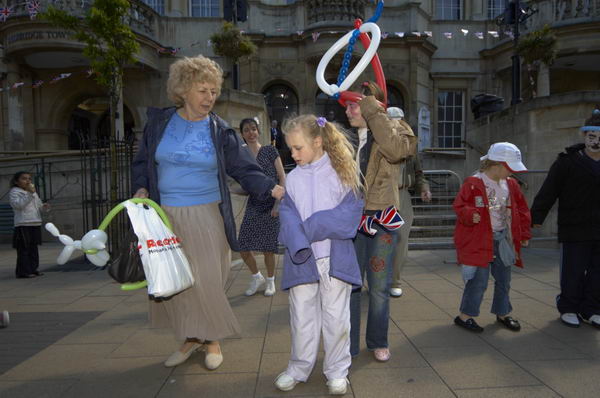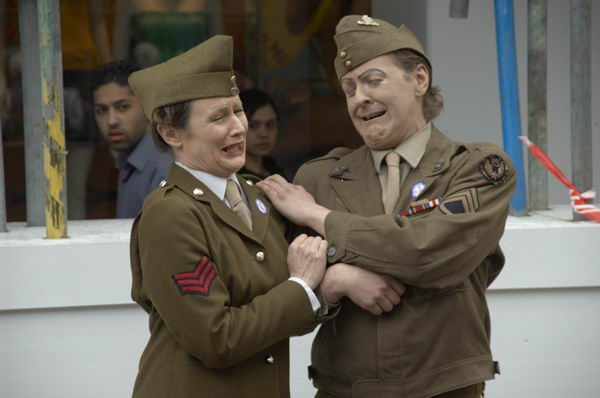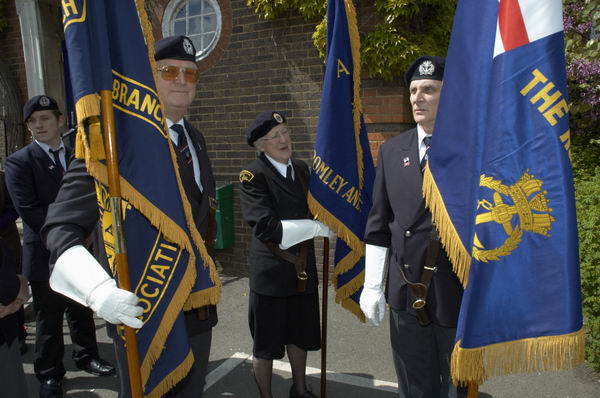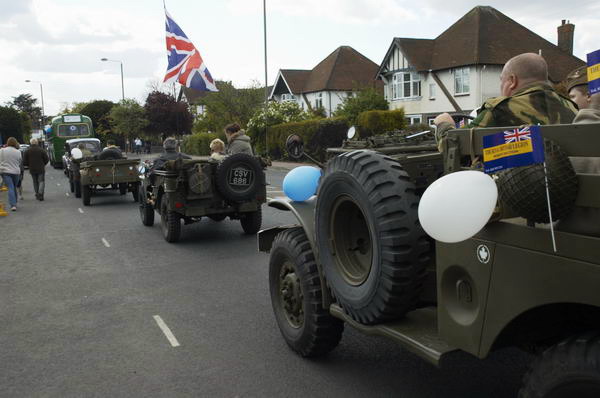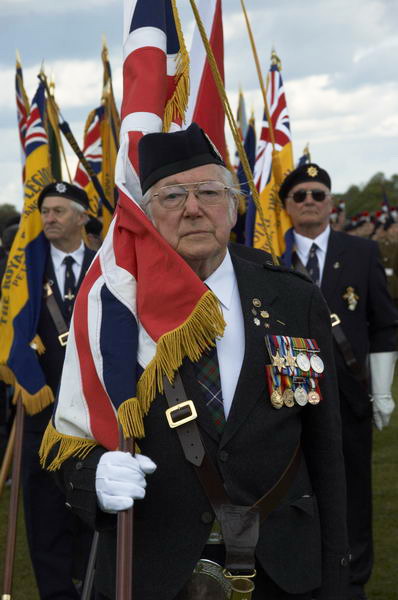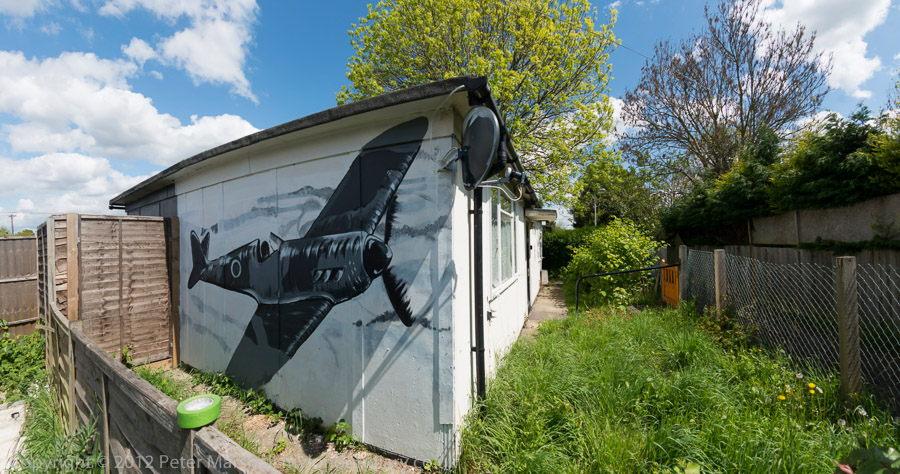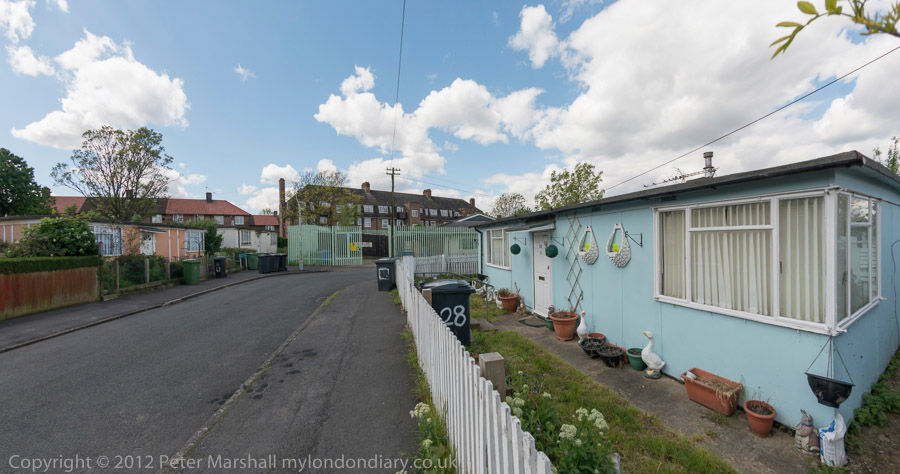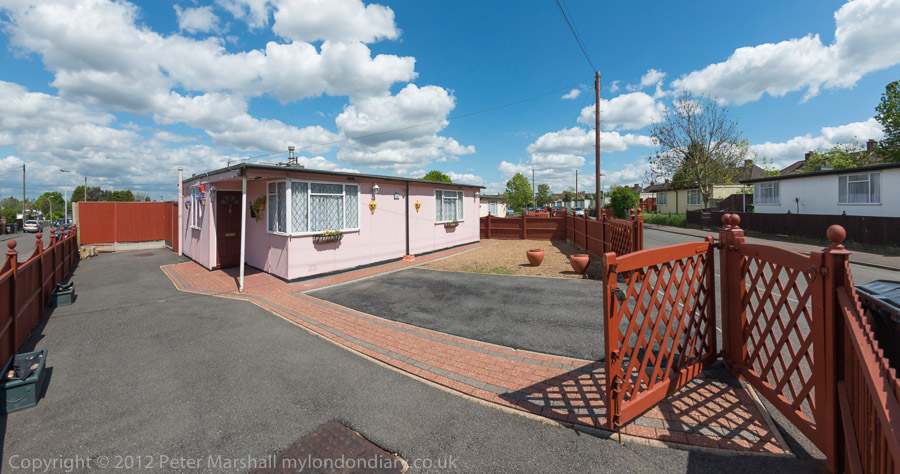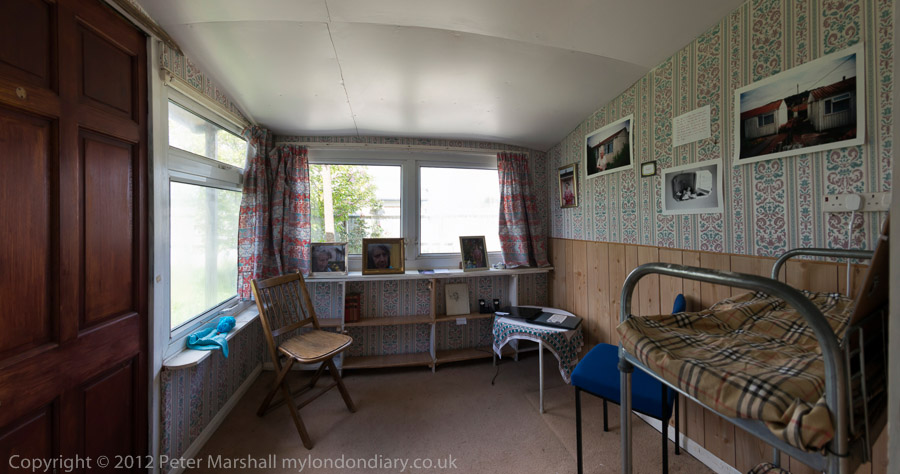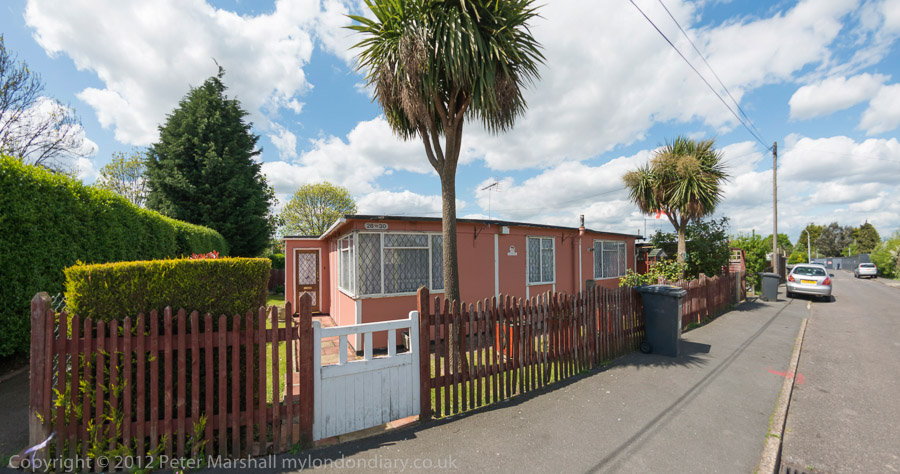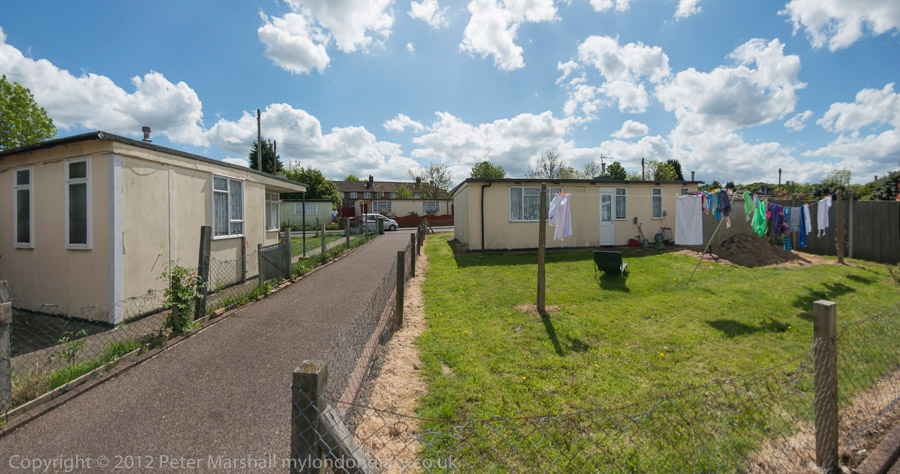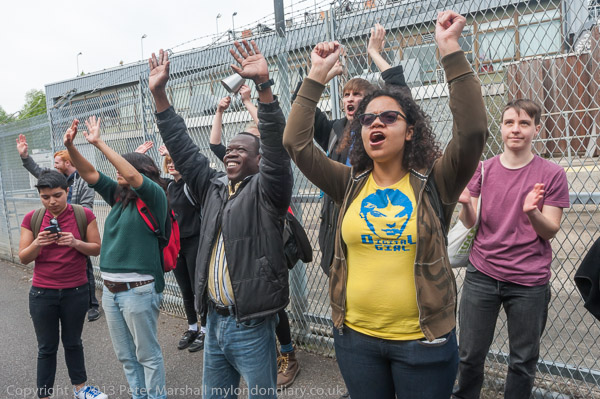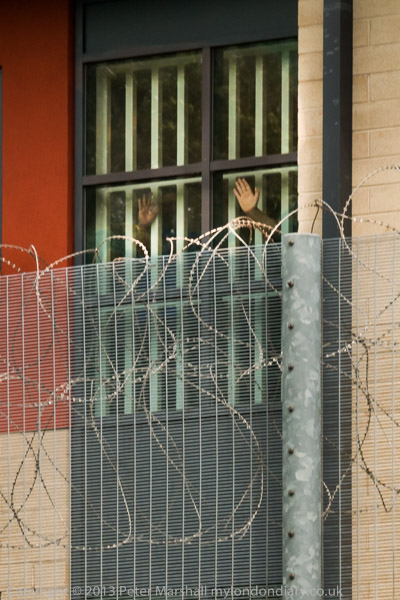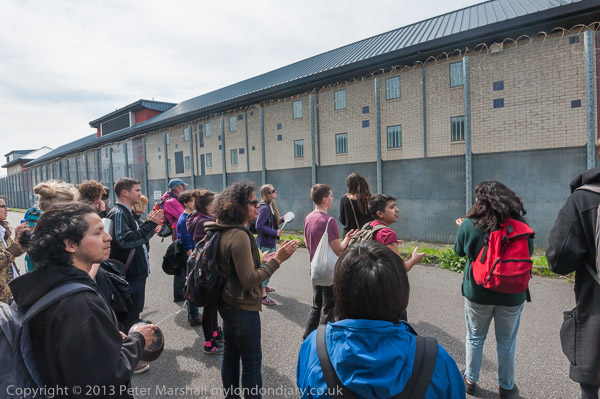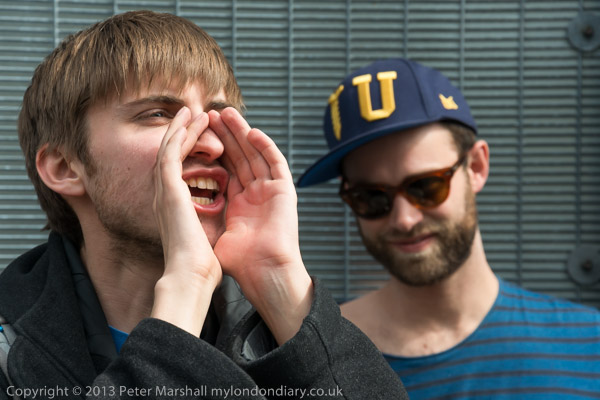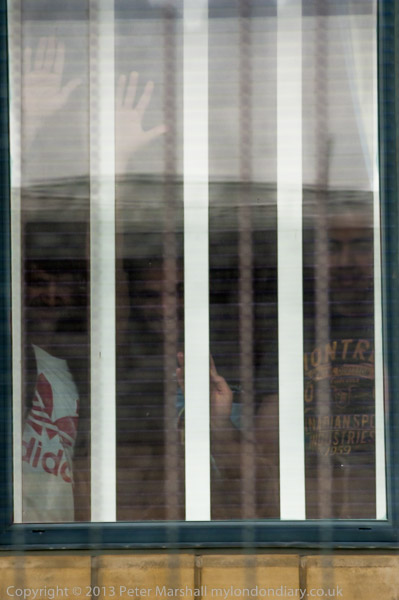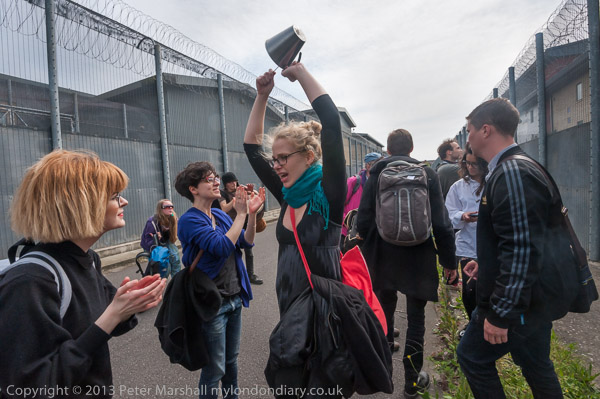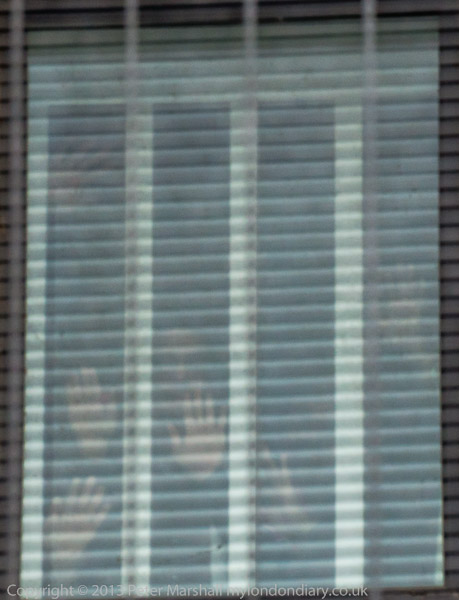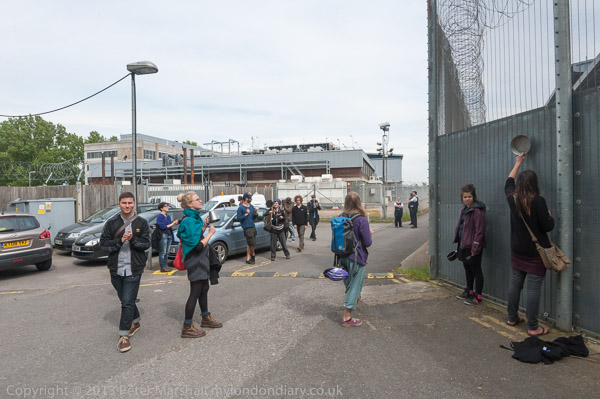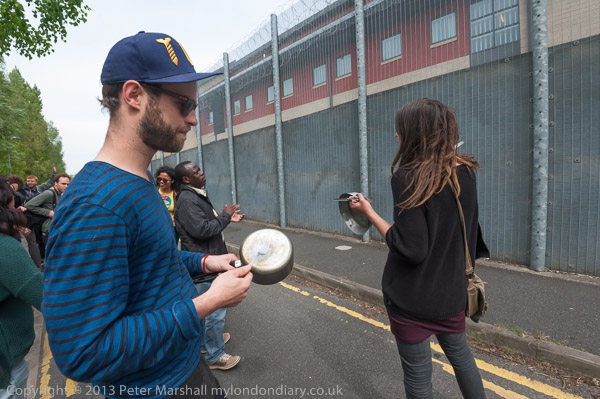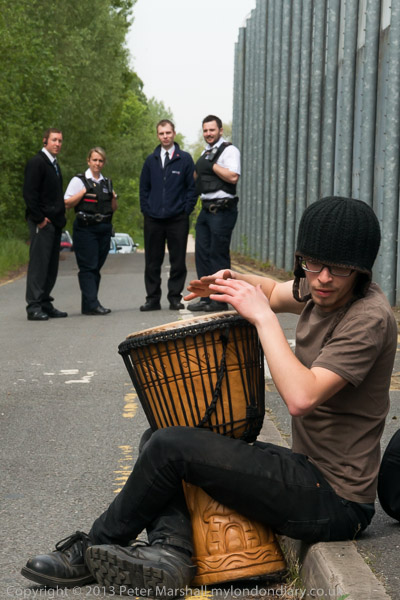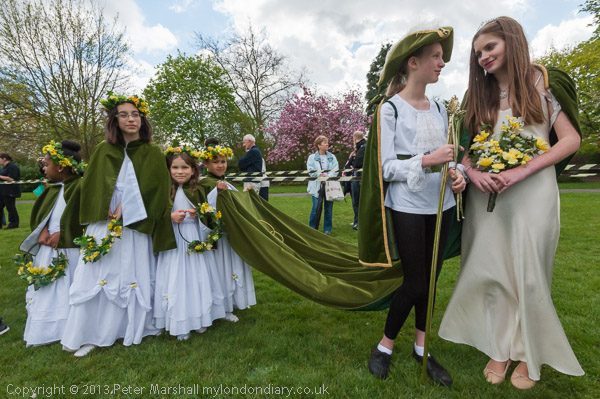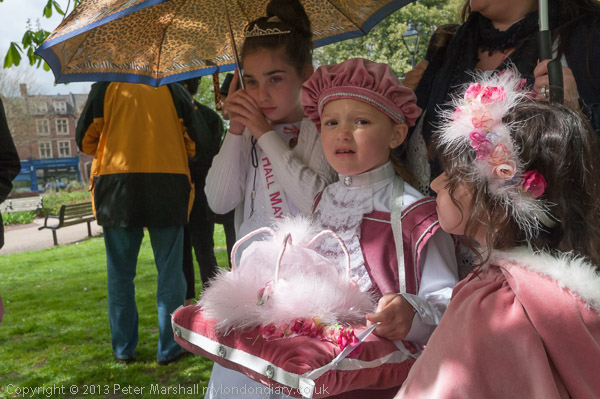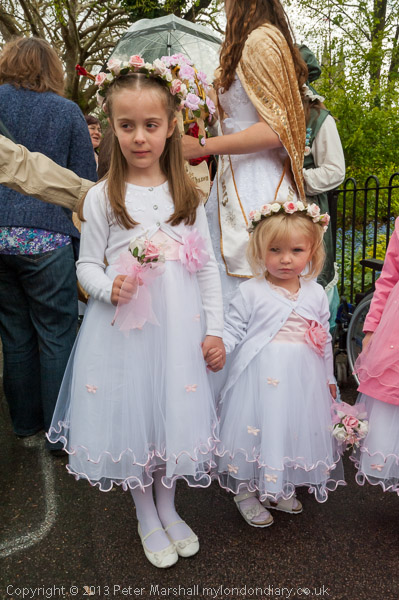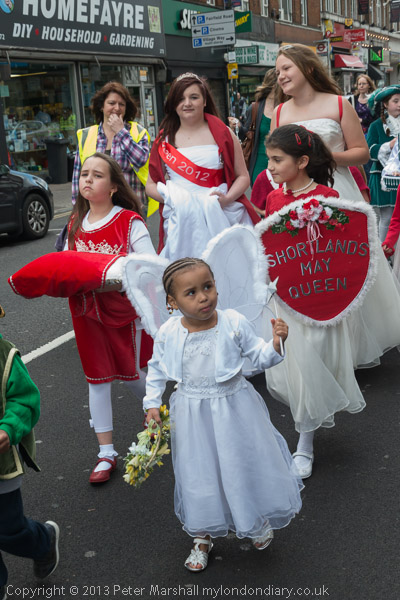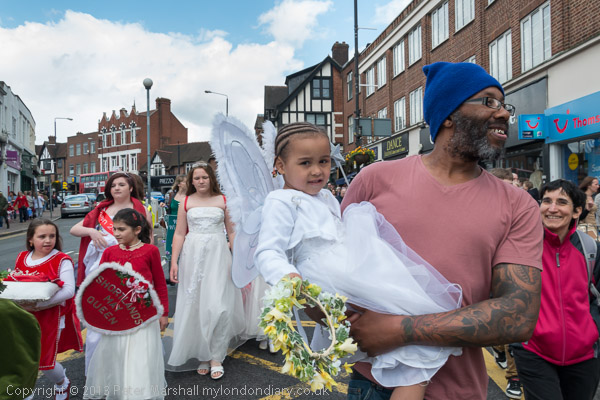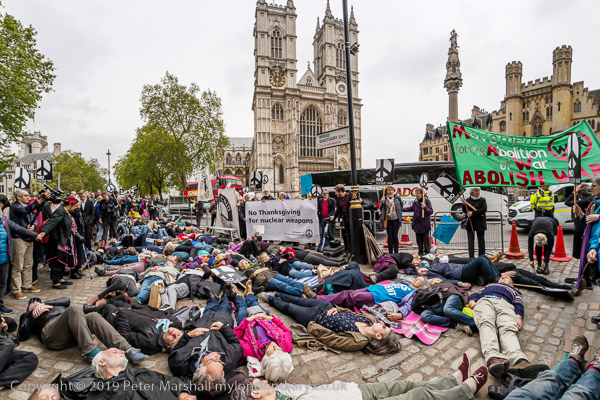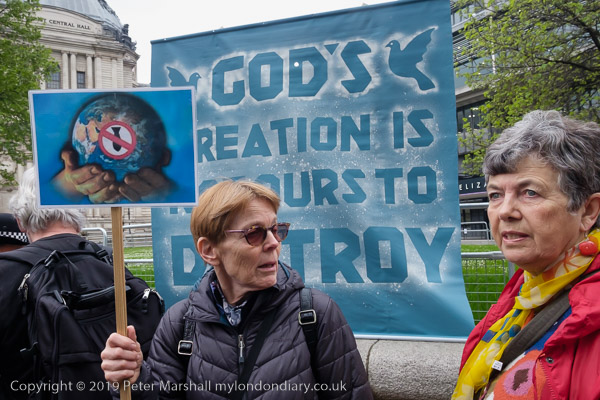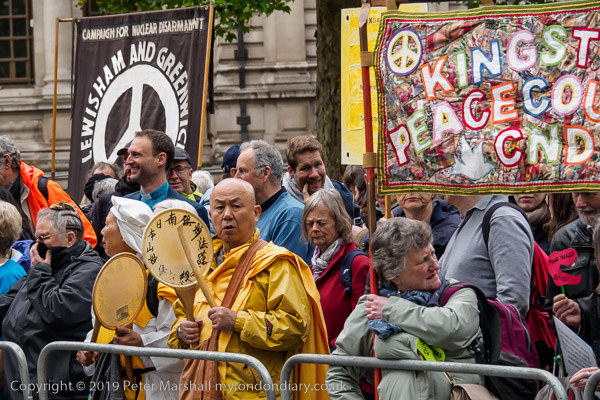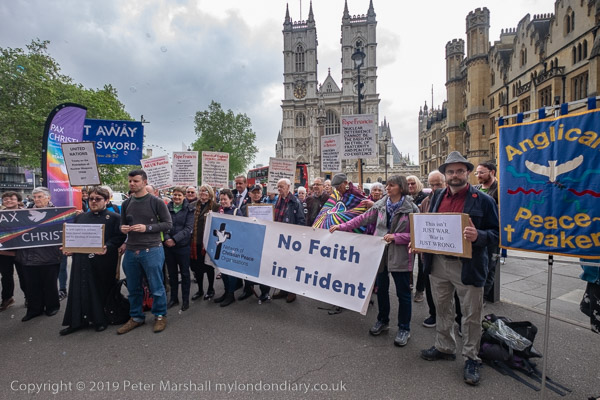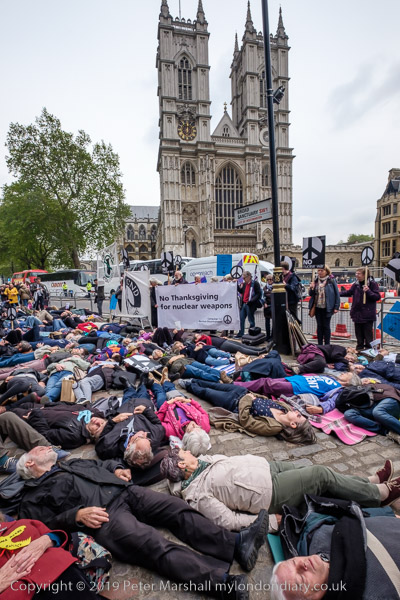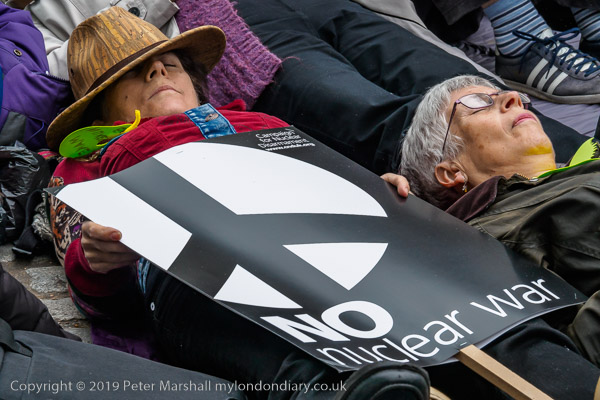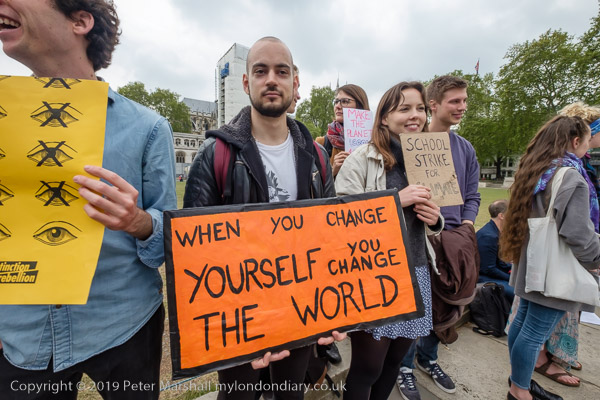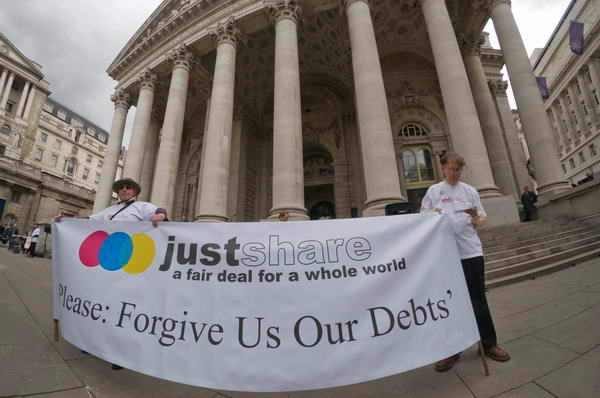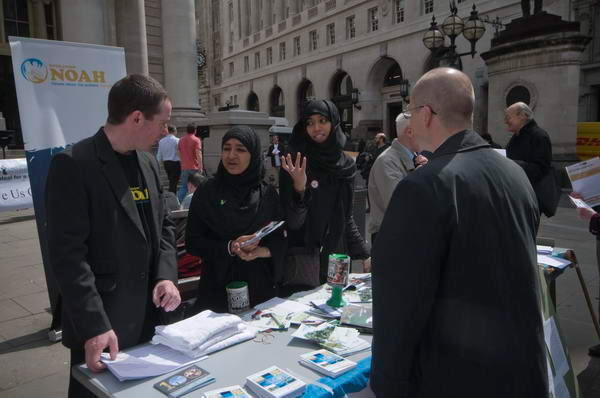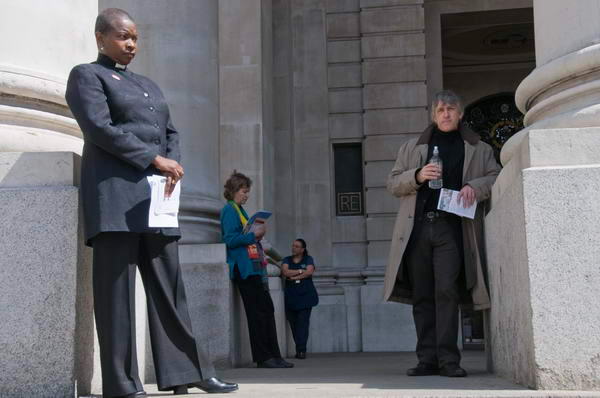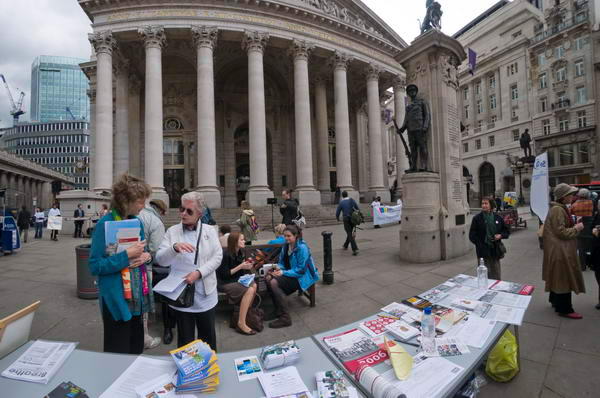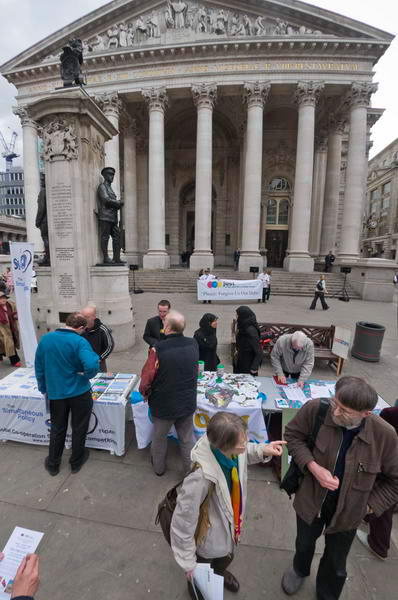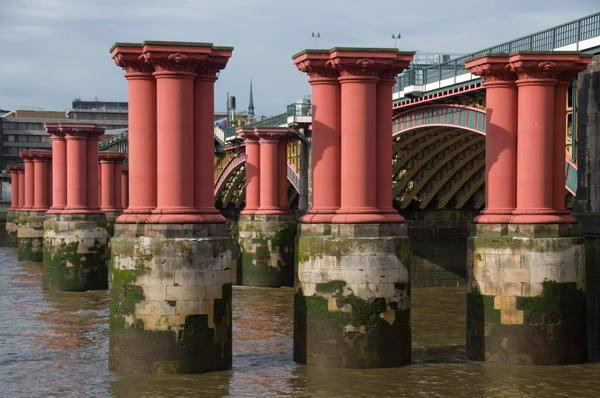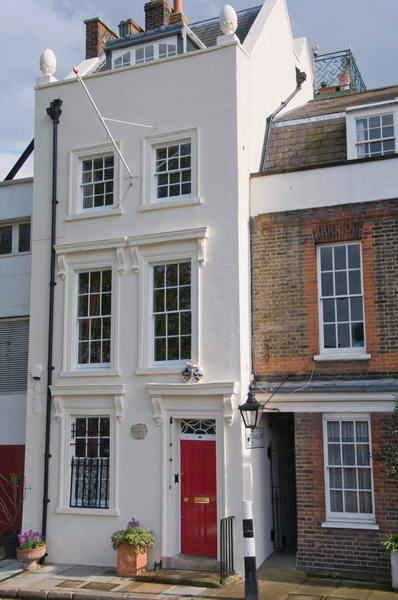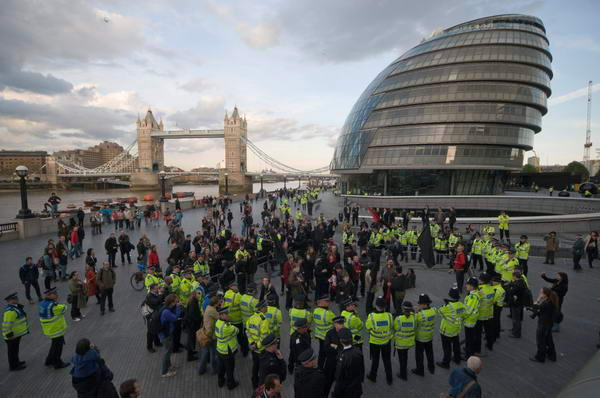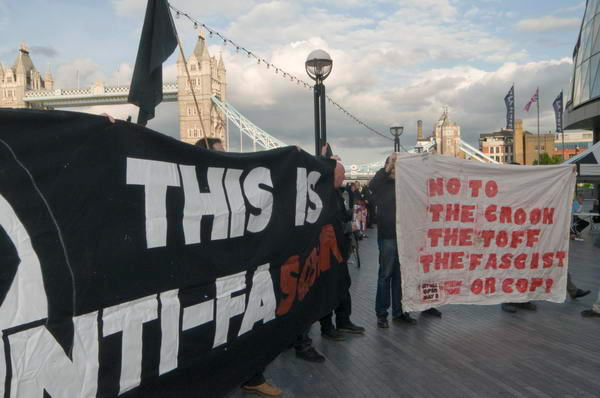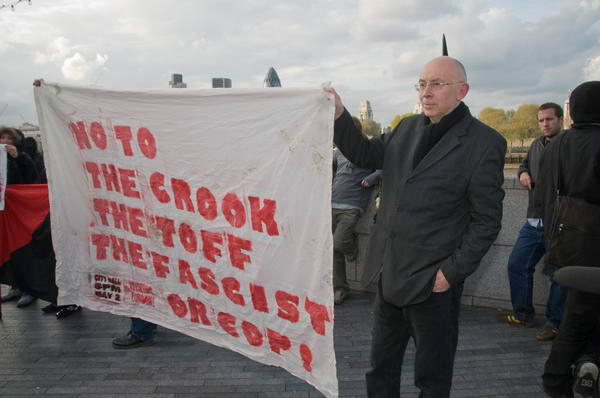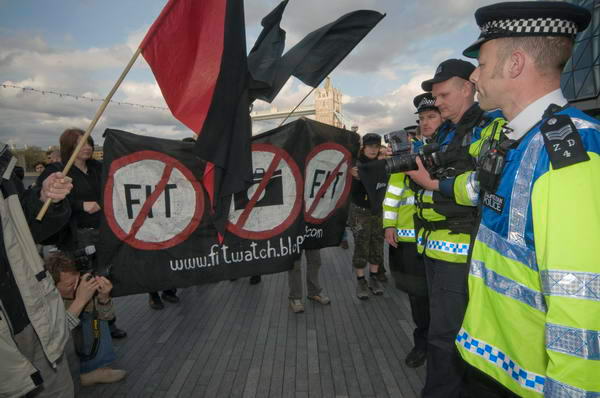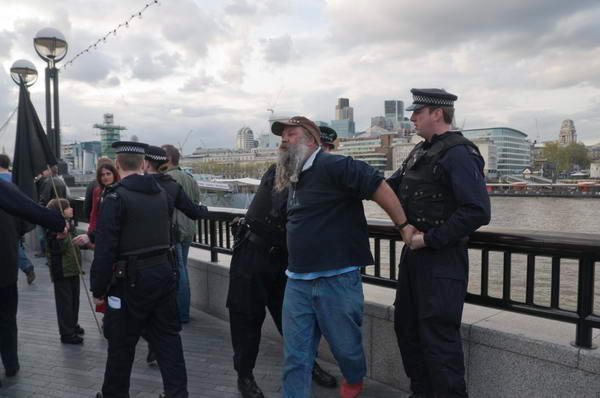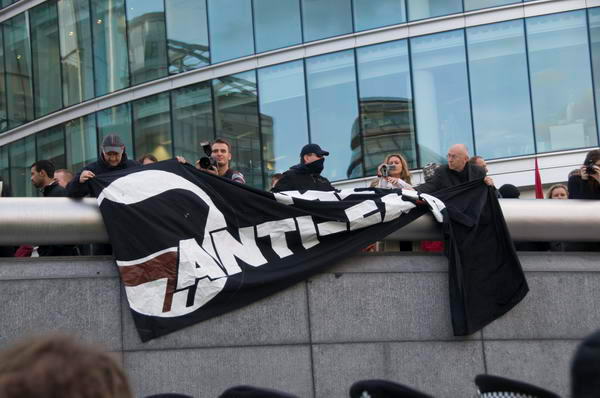Hardest Hit March Against Cuts: On Wednesday 11th March 2011 around 10,000 people, many in wheelchairs came to march in London calling for an end to harassment and benefit cuts for the disabled.
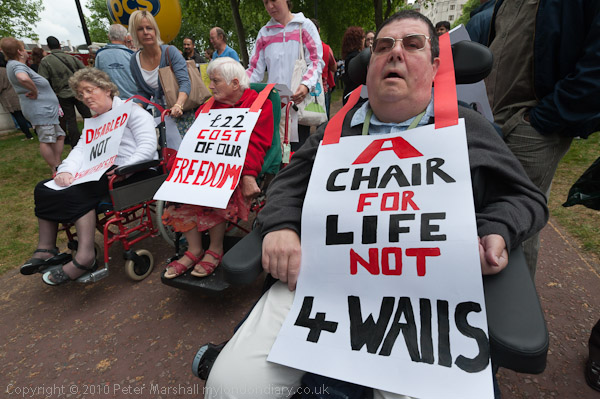
The Hardest Hit march was supported by a huge range of charities and organisations representing and supporting the physically and mentally disabled, including major unions such as PCS, UCU and Unite.
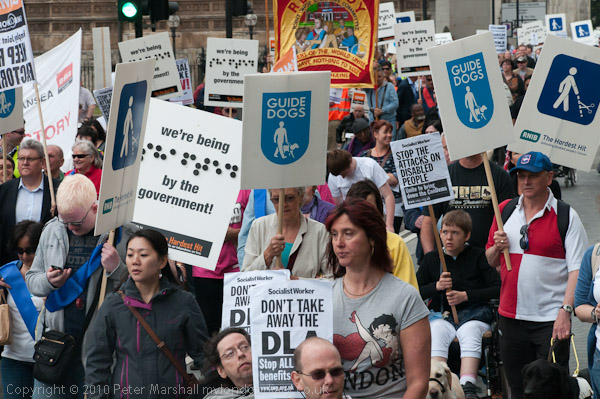
The protest came a year after the formation of the coalition government led by David Cameron with Lib-Dem leader Nick Clegg as his deputy, with real power staying with the Tory majority and is now widely seen as a disaster for the Lib-Dems. Under Chancellor George Osborne the coalition plunged the country into the start of ten years of austerity, with particularly swingeing cuts to local government services as well as a drastic attack on all those claiming benefits.
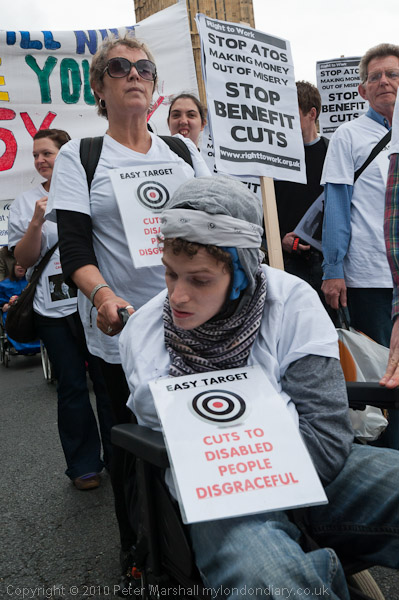
The cuts disproportionately affected the poor and the disabled while the wealthiest in our society were hardly if at all affected. In 2018 the UN special rapporter on extreme poverty concluded his visit to the UK by reminding us that ‘Poverty is a political choice‘ and that ‘Austerity could easily have spared the poor, if the political will had existed to do so’.
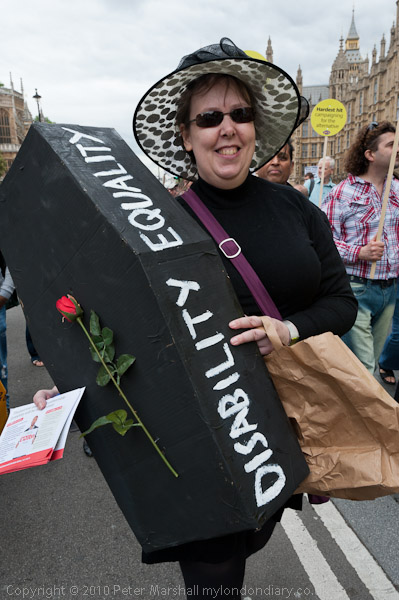
For the disabled and those on benefits there were cuts and freezes and the situation was made worse by the ignorance and incompetence of Iain Duncan Smith, Secretary of State for Work and Pensions from 2010 to 2016.
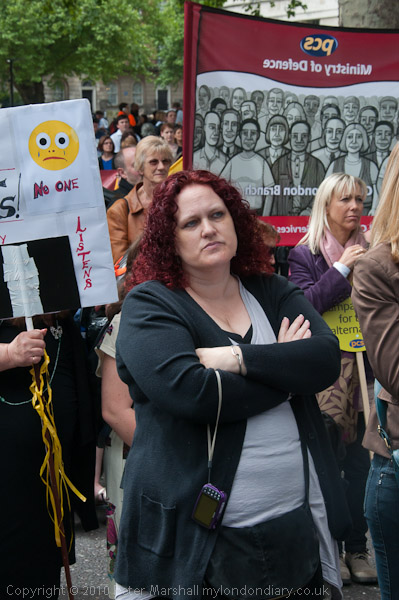
It was under Labour in October 2008 that Work Capability Assessments were introduced but the numbers made before 2010 were relatively small and they were used for new Employment and Support Allowance (ESA) claimants and a small number of ESA reassessments. It was only in Spring 2011 under the coalition government that a programme began to move those on existing benefits onto ESA using the WCA tests administered by Atos began.
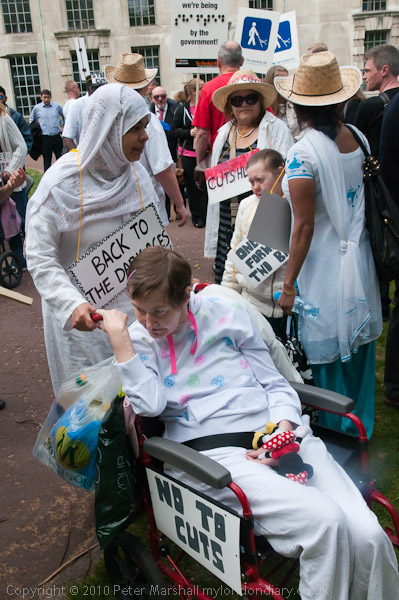
Already by 2011 there had been serious criticisms both of the unsatisfactory nature of the tests and of the failures by Atos to administer them correctly, and this protest march called both for an end to the cuts in benefits for the disabled and “and in particular for an end to the discredited and iniquitous testing regime administered by Atos Healthcare, which has replaced proper medical tests by a computer-based system that often ignores the actual needs of those being assessed, and has as unacceptably high error rate, with a majority of appeals against its assessments succeeding.“
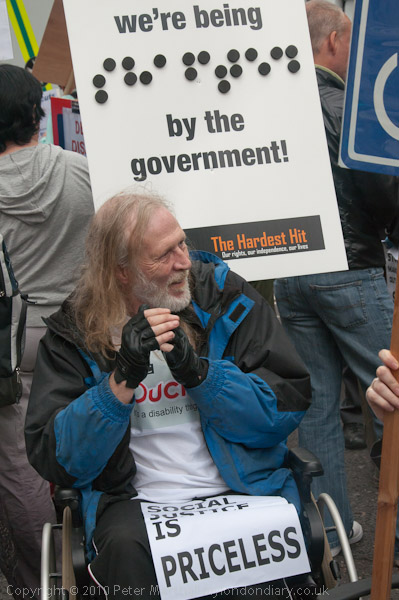
Despite the huge body of evidence and the many deaths the system caused, only minor changes were made and it was not until 2014 that the contract with Atos was ended, only for them to be replaced by Maximus who carried on the same way. Atos, now renamed IAS, remains now a part of the assessment system for ESA, Universal Credit and PIP along with Maximus and Capita.
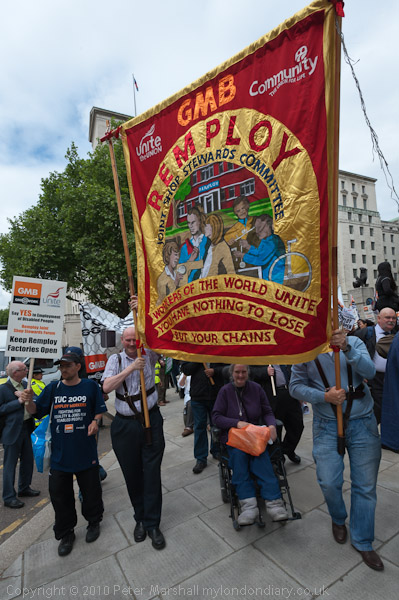
Both New Labour and the Coalition made cuts in many positive projects and organisations set up to help the disabled. One of these was Remploy, whose last state-run sheltered factory set up to employ disabled labour closed in 2013 with the loss of over 1700 jobs. It is now a part of Maximus.
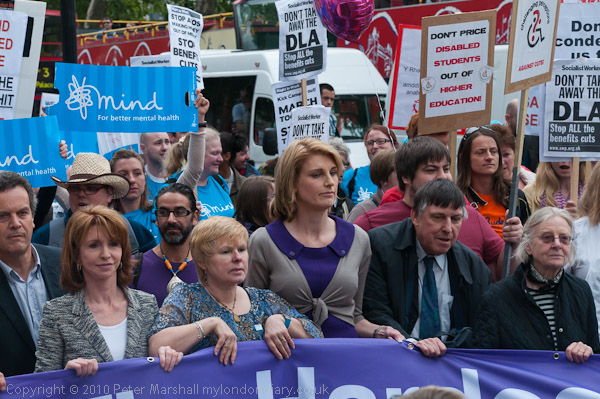
This protest got more media attention than most, largely because of the presence among those leading the march of Sally Bercow, the wife of the then Speaker of the Commons, and actress and activist Jane Asher, president of three of the organisations involved, Arthritis Care, National Autistic Society and Parkinson’s UK. It was followed by a mass lobby of MPs.
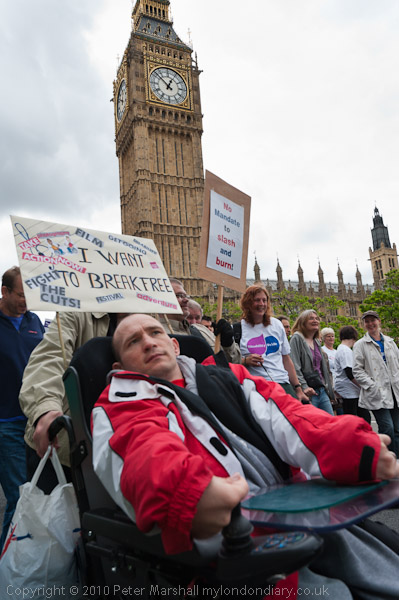
Since then there have been many more protests against the unfair treatment of the disabled as various benefits have been scrapped and Universal Credit has led to further problems, but nothing on this scale. Disabled people have not only suffered most they have also become some of the more active protesters, particularly led by groups that were on this march including Disable People Against Cuts (DPAC), Mental Health Resistance Network (MHRN), Winvisible, Black Triangle and others.
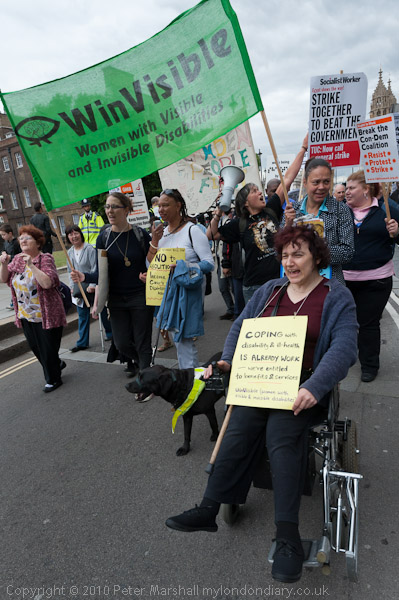
This ‘Hardest Hit’ march came during a ‘National Week of Action Against Atos Origin‘ organised by disability activists, claimant groups and anti-cuts campaigners and two days earlier they had protested outside the offices of Atos Healthcare in London. You can see more on My London Diary in Disabled Protest Calls Atos Killers.
More at Hardest Hit March Against Cuts.

















